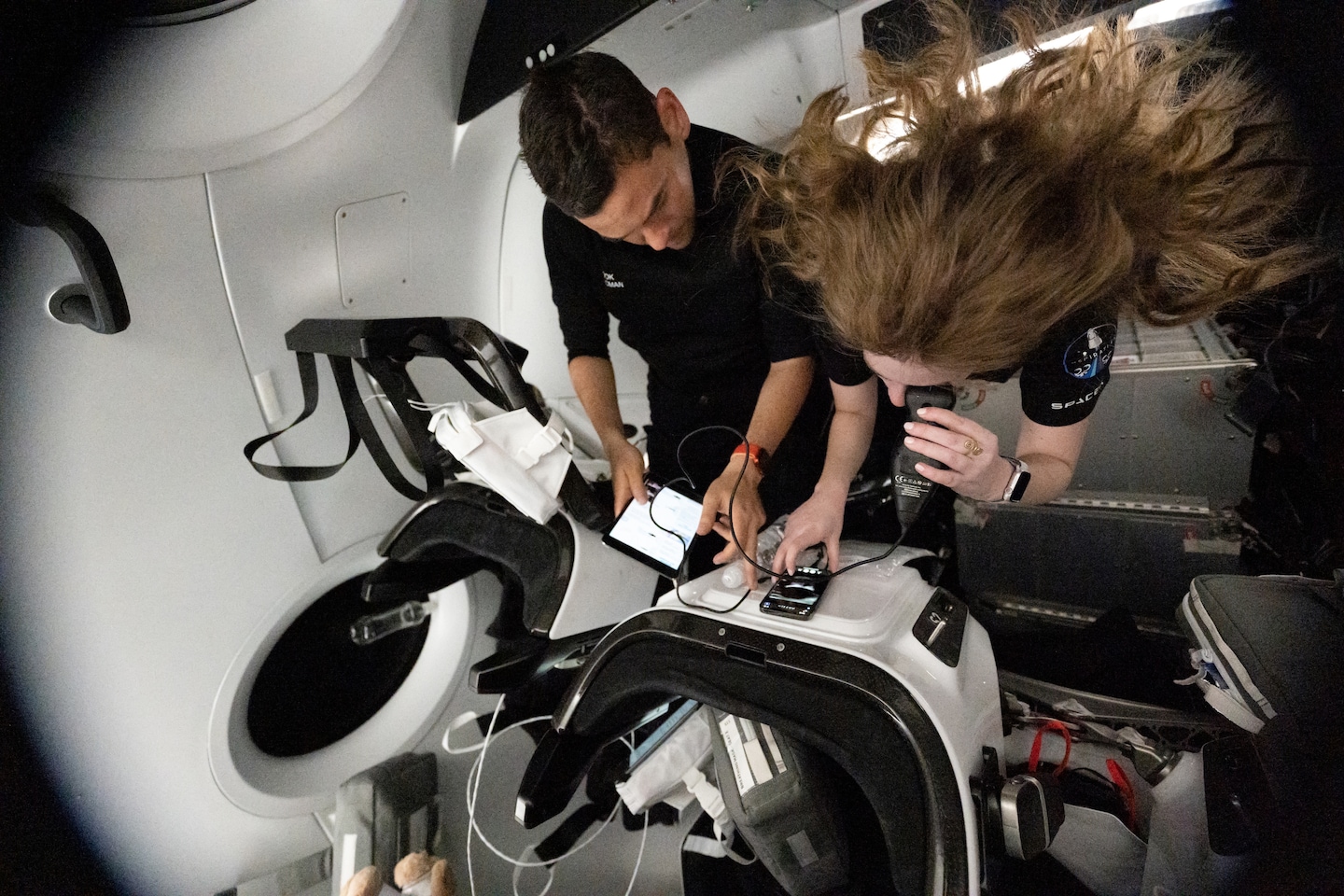“There’s no showstopper,” said Christopher Mason, professor of physiology and biophysics at Weill Cornell Medicine and one of the leaders of the new research. “There’s no reason we shouldn’t be able to safely get to Mars and back.”
In a conference call with reporters, Mason noted that women seem to be better able to withstand the stress of spaceflight, which could be associated with the ability to give birth and “tolerate large changes in physiology and fluid dynamics.”
This remains a preliminary finding, and researchers are eager to see more women in the cohort of astronauts involved in these studies, said Susan Bailey, a biological scientist at Colorado State University who is part of the research effort. She also noted that earlier studies suggested that women exposed to space radiation might be more susceptible to certain kinds of cancer.
The massive trove of new data, dubbed the Space Omics and Medical Atlas (SOMA), has been made public and is detailed in research papers published in the Nature Portfolio journals. It is the most comprehensive medical database showing what happens to astronauts when they leave the comfortable terrain where our species evolved.
The studies rely in large part on Inspiration4, a privately funded, all-civilian orbital mission launched by SpaceX in 2021. The four volunteers spent three days in space, and provided biospecimens before, during and after the mission. The researchers also looked at medical and biological research on 64 NASA astronauts.
Human beings have been going into space for the past 63 years, but scientists are still trying to figure out exactly what is happening to bodies and minds not accustomed to zero gravity and the radiation environment beyond the atmosphere.
With commercial spaceflight booming, and national space agencies focused anew on sending people to the moon and eventually to Mars, scientists and medical professionals are hoping to develop new medicines and tools to limit or repair the damage done by prolonged exposure to space.
“While innovation across the aerospace sector makes these ambitions technologically achievable, the biomedical challenges for crews in these extraplanetary habitats still need to be addressed, as humans did not evolve to survive in such extreme environments,” one of the reports states.
Mason said he said he saw no “red flags” preventing a Mars mission, but researcher Afshin Beheshti of the Blue Marble Space Institute of Science said one paper raises a “yellow flag” — the higher risk of kidney stones.
“Kidney stones, halfway to Mars, how are you going to treat that?” Beheshti said.
The most significant risk of long-duration spaceflight may not be physiological at all. Astronauts working in confined spaces over long periods of time potentially face problems with social cohesion, the researchers noted. Because space is not where anyone wants to have a bad roommate.
#Spaceflight #hard #humans #scientists #showstoppers,
#Spaceflight #hard #humans #scientists #showstoppers
